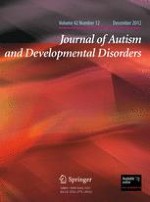01-12-2012 | Original Paper
Are Prenatal Ultrasound Scans Associated with the Autism Phenotype? Follow-up of a Randomised Controlled Trial
Gepubliceerd in: Journal of Autism and Developmental Disorders | Uitgave 12/2012
Log in om toegang te krijgenAbstract
An existing randomised controlled trial was used to investigate whether multiple ultrasound scans may be associated with the autism phenotype. From 2,834 single pregnancies, 1,415 were selected at random to receive ultrasound imaging and continuous wave Doppler flow studies at five points throughout pregnancy (Intensive) and 1,419 to receive a single imaging scan at 18 weeks (Regular), with further scans only as indicated on clinical grounds. There was no significant difference in the rate of Autism Spectrum Disorder between the Regular (9/1,125, 0.8 %) and Intensive (7/1,167, 0.6 %) groups, nor a difference between groups in the level of autistic-like traits in early adulthood. There is no clear link between the frequency and timing of prenatal ultrasound scans and the autism phenotype.
